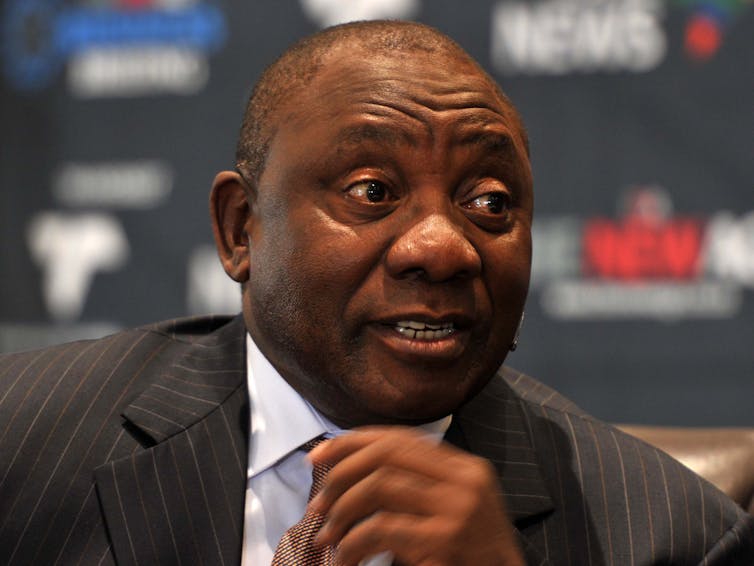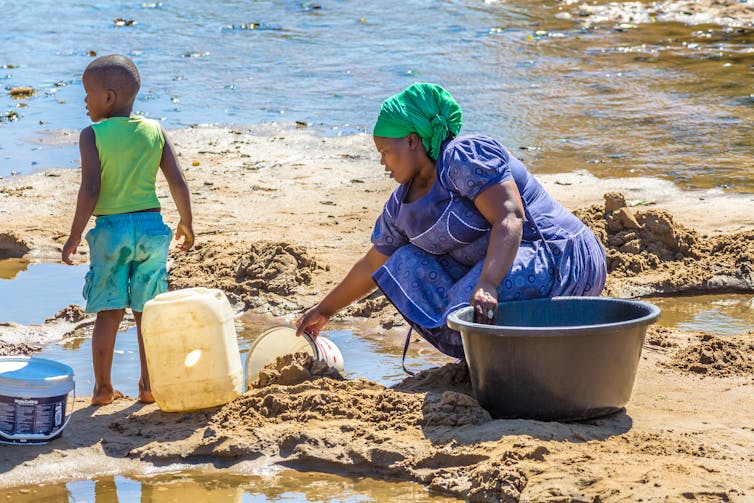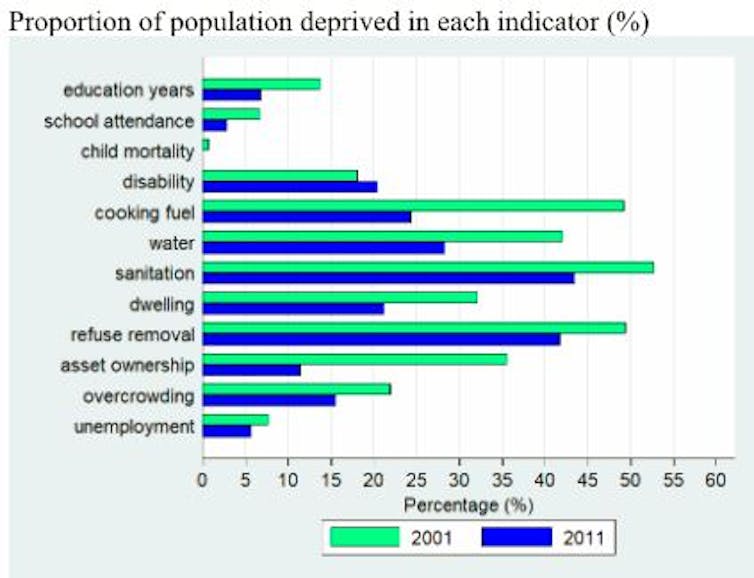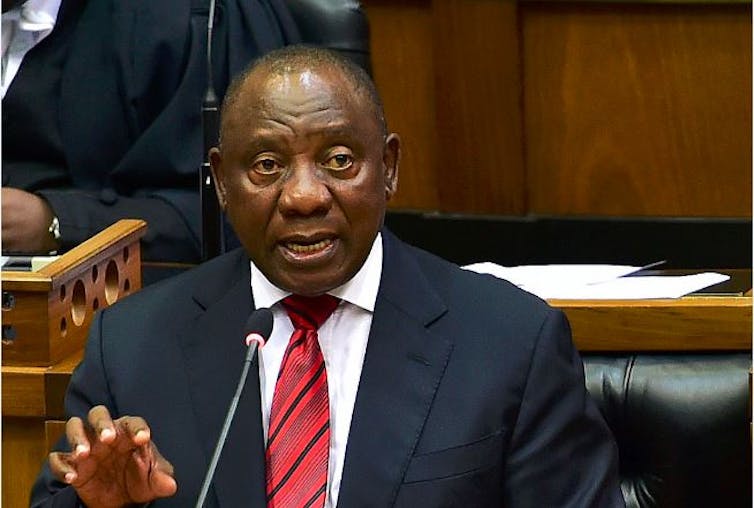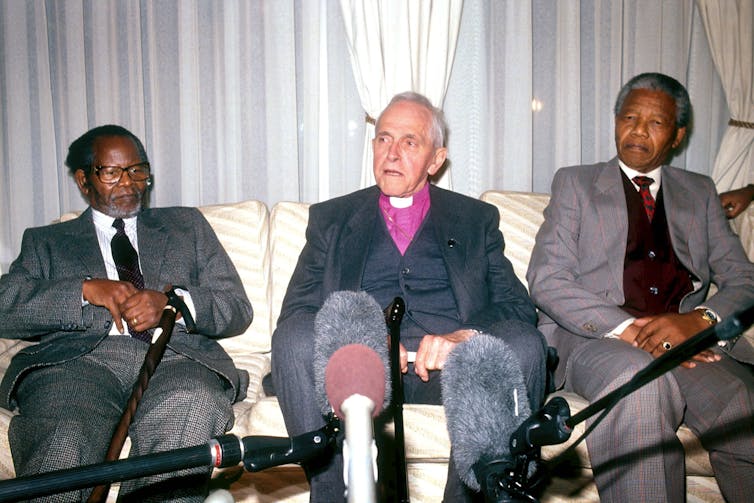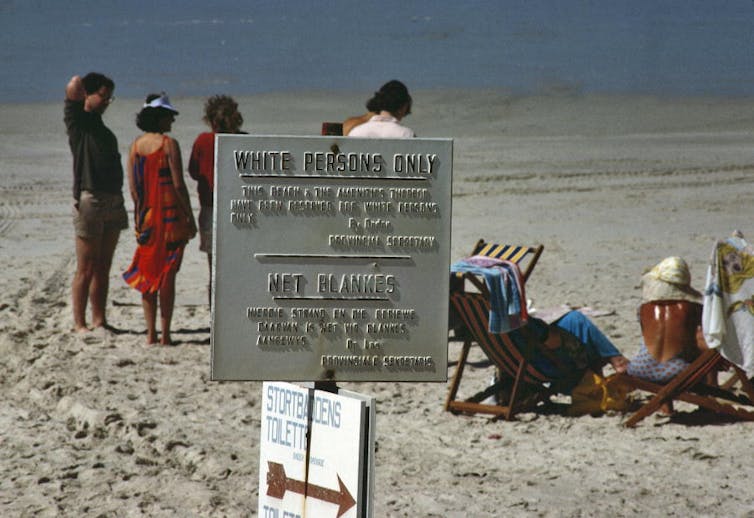 |
| History textbooks suggest that in 1994 when formal apartheid and racial exclusion ended, so did prejudice and racism. United Nations Photo/Flickr, CC BY-NC-ND |
History may soon be a compulsory school subject until Grade 12 in South Africa. A task team established by the country’s minister of basic education made this bold recommendation in a report released in early June.
The task team credits history education with three grand tasks. The first is developing critical thinking skills, particularly those relating to “evidence” and the unique concepts necessary to becoming an academic historian. The second is to develop identity, with a focus on pan-Africanism and nation building. The third is about social cohesion: the ability to transcend racial, class and ethnic barriers by recognising the problem of prejudice and the issues facing a multi-cultural society.
If history is taught correctly, the report argues, school-leavers should become capable of dealing with educational, social and political problems.
The task team isn’t unique in its position. It draws on decades of post-conflict literature which has argued that history education is important for memory and identity formation. Since history education equals social cohesion, the logic follows that more history education will equal more social cohesion.
The problem is that history education as it’s currently delivered may not achieve the desired outcomes. My ongoing fieldwork involves observing four racially diverse Grade 9 history classes in Cape Town, with learners who represent a range of social and economic statuses. The observations are taking place over the course of the academic year, interspersed by longitudinal interviews with the teachers and learners.
The findings suggest that even when students are knowledgeable about historical events, they struggle to explain how these events shape contemporary society.
History education needs a more explicit focus on historical consciousness if students are to become capable of dealing with South Africa’s social problems. This focus would help students to construct a relationship between past events and present-day reality so they can understand why we are the way we are.
Textbook tales
Developing historical consciousness would require a shift from what’s currently happening. Take for instance the contents of the Platinum Social Science Learner’s Book, which is prescribed for Grade 9 history pupils in South Africa.
The history discussed in this textbook touches upon a number of important subjects including human rights, racism and legal discrimination. It explores some of the turning points in the history of apartheid: the Sharpeville massacre, the Langa march, the Soweto uprising, and the release of Nelson Mandela.
The chapters emphasise the causes and consequences of historical moments. Students are taught to understand not only the apartheid regime’s human rights abuses, but also the nature of the resistance to that regime – which after a long struggle led to democracy in South Africa. However, the textbook’s lessons on apartheid end with the “historic” election of 1994.
That election is undoubtedly an achievement worth celebrating. But the implication in the textbook is that when apartheid ended in 1994, so did the poverty, racism, discrimination and violence that were aspects of the apartheid regime. There is absolutely no discussion of the lasting impacts of apartheid, or any link between South Africa’s current problems and its recent past.
This means is that it is often left up to individual teachers to make those links between the past and the present. Unsurprisingly, the teachers that I observe construct an historical consciousness in very diverse ways even though they are all teaching the same set of historically accurate events.
For example, one teacher explained to his racially homogeneous class that their lack of diversity was a direct result of apartheid. Another compared the fascist approaches of Nazi Germany to that of the apartheid state and placed them both firmly in the past.
This is not a judgement on the historical consciousness these teachers present. But it’s worth interrogating the diverse contemporary meanings that are being created around historical events when historical consciousness is absent from the curriculum.
Students’ views
Even more interesting were the responses of the pupils, who are all around 14 years old, as they explained how they saw the relationship between past and present.
A number of students had a good understanding of apartheid events. But the only way they could explain the country’s continued racialised wealth discrepancy was to state that black South Africans were lazy. Many did not draw upon structural or historical explanations when interpreting their own social reality.
One Xhosa-speaking black student who lives in a shack argued that apartheid had no lasting effects – because the white family whose home his mother cleans often speak to him kindly. Most of the students that I interviewed believed that the colonisation of South Africa was ultimately a positive thing because now we have “clothes, food and technology”. None of the students of any race believed that white people had any historic responsibility to address past wrongs.
These students were neither stupid nor ill-informed. So how should we make sense of their responses? Perhaps this is what social cohesion looks like in 2018. For the most part they were not angry about the past, because they don’t see the past as having a particular impact on their present lives. The past is a lesson to learn from, not something which stands in their way.
Natasha Robinson, PhD Candidate and research consultant, University of Oxford
This article was originally published on The Conversation.
